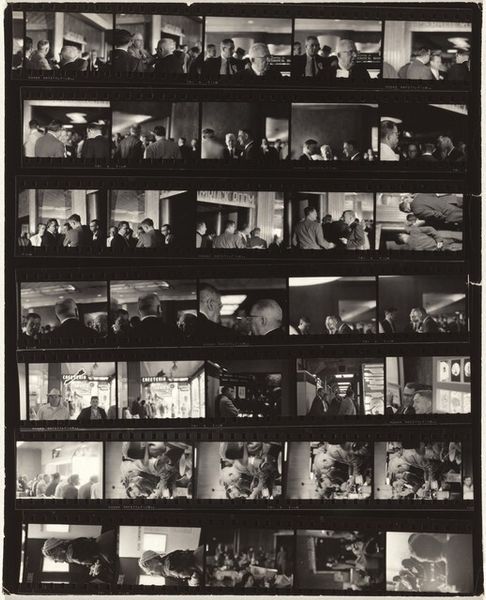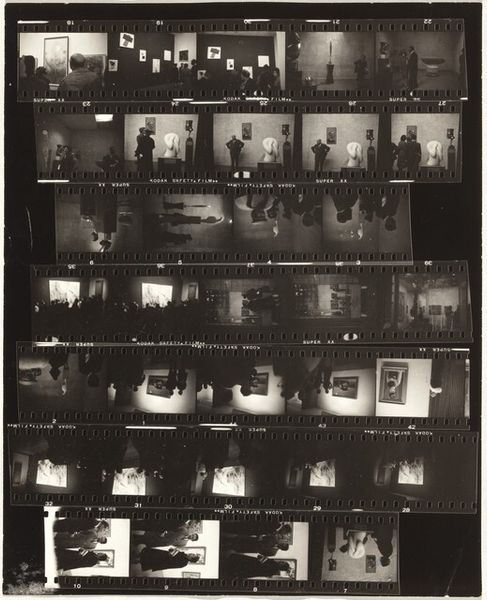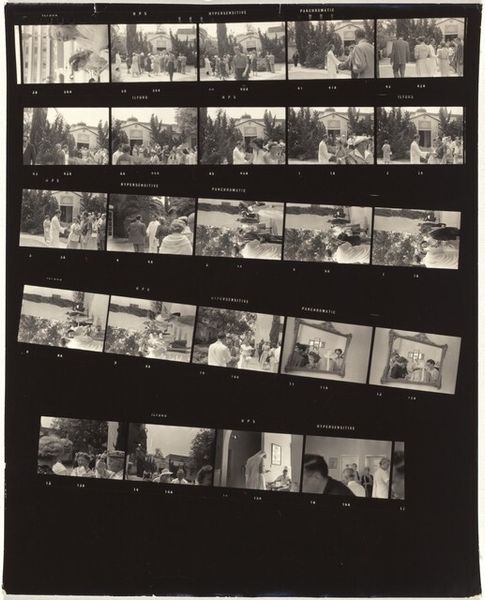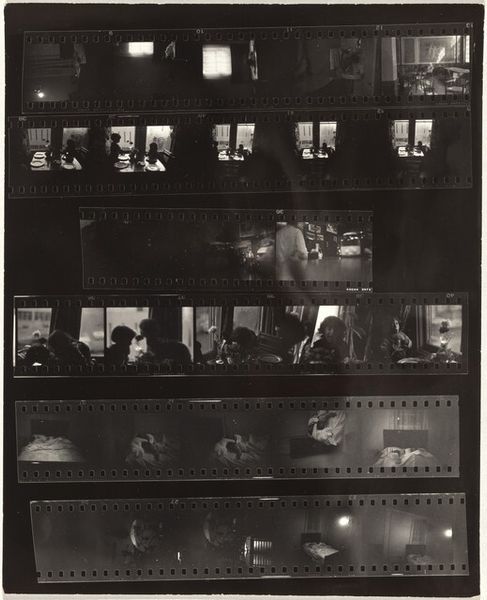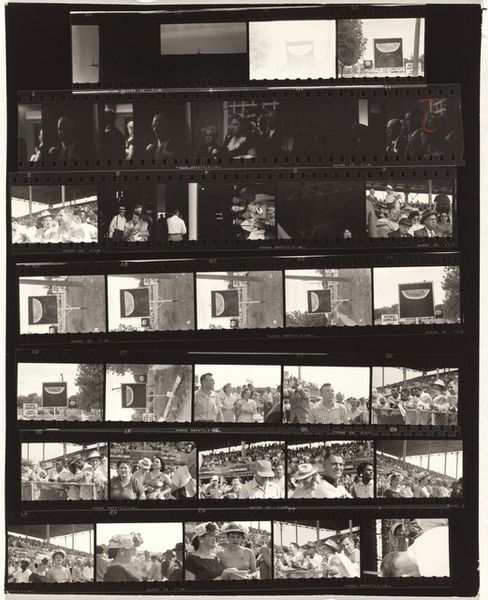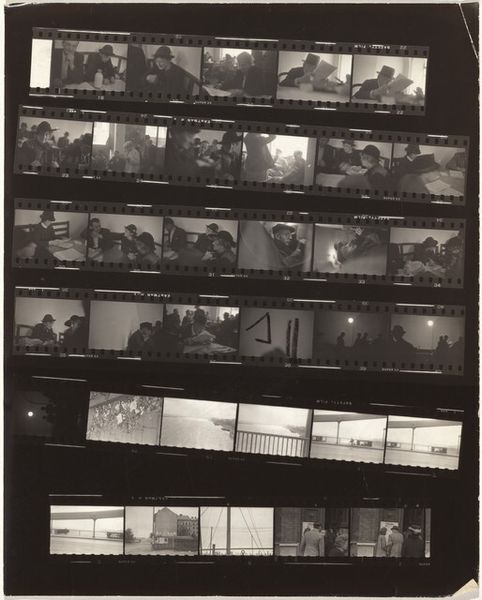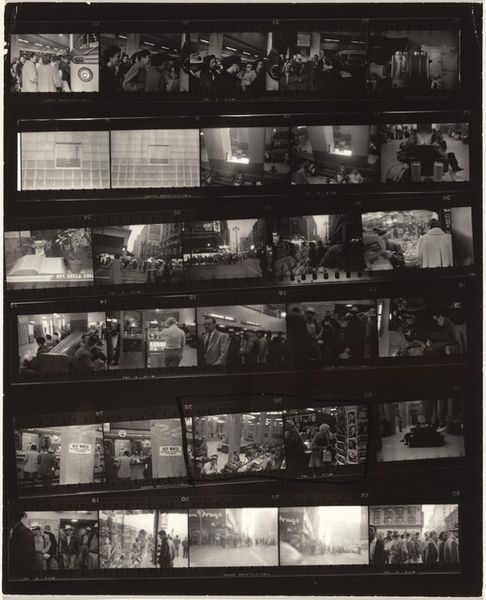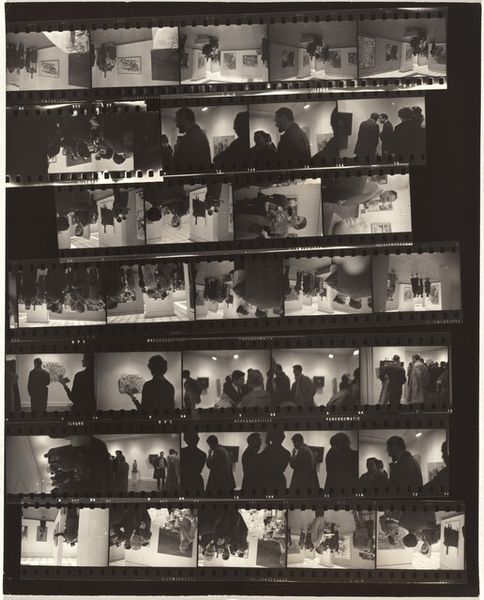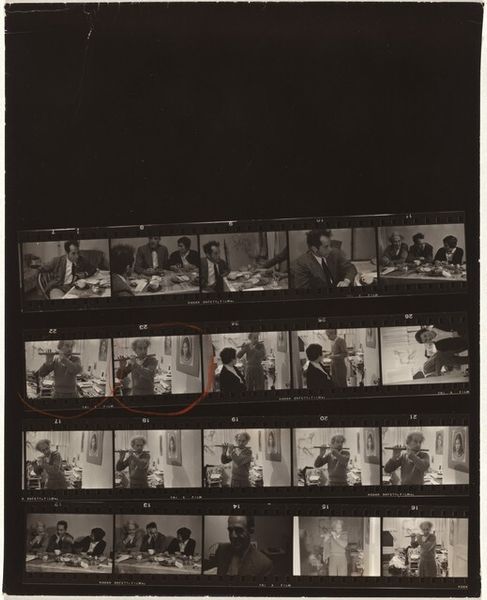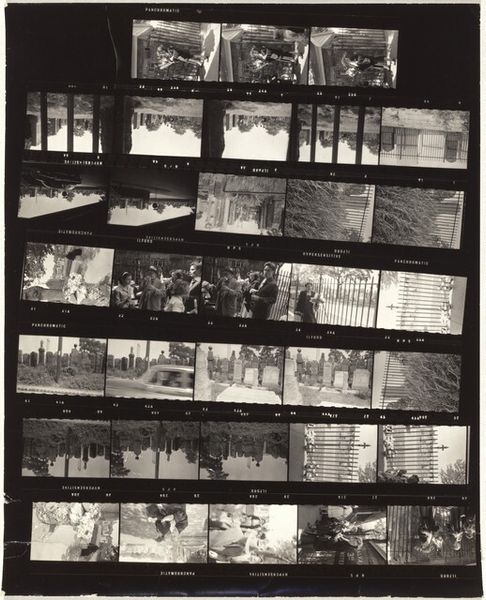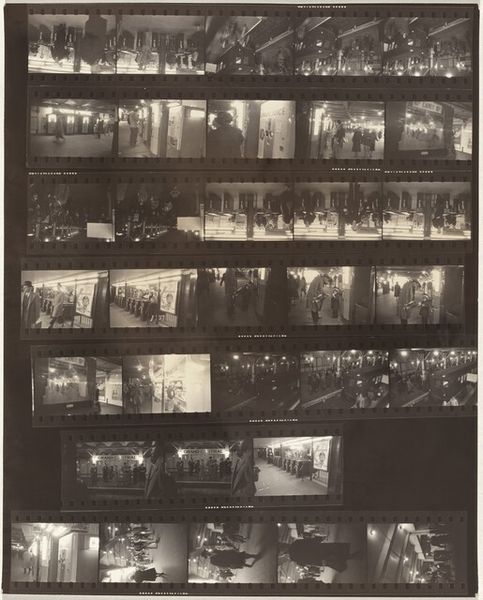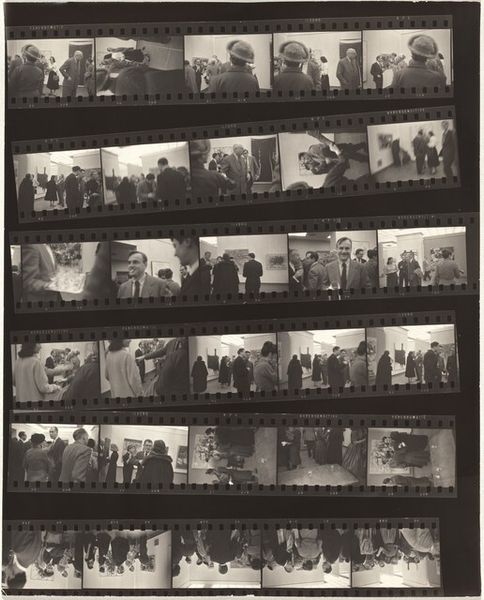
Guggenheim 484--Twentieth Century Fox film studio, Burbank, California 1956
0:00
0:00
photography
#
film photography
#
black and white photography
#
archive photography
#
street-photography
#
photography
#
monochrome photography
#
ashcan-school
#
film
#
monochrome
Dimensions: overall: 25.3 x 20.5 cm (9 15/16 x 8 1/16 in.)
Copyright: National Gallery of Art: CC0 1.0
Curator: What we have here is a contact sheet by Robert Frank, titled "Guggenheim 484—Twentieth Century Fox Film Studio, Burbank, California" dating from 1956. It offers a peek into the world of film production during that era. The medium is black and white photography. What strikes you first? Editor: The claustrophobia. All those small rectangles trapping slivers of activity. It feels less like a celebration of Hollywood and more like a series of captured, confined moments. Is this Frank critiquing something? Curator: Precisely! Frank was funded by a Guggenheim Fellowship at the time, giving him considerable freedom. This contact sheet can be seen as part of his broader project of documenting America—including its entertainment industry, its implicit social hierarchies, and what he might have perceived as a certain... alienation. Editor: The light and shadow amplify that feeling. The top rows show a staged scene—a musician, maybe—under bright lights. Then lower down, rows of faces, more obscured, watching. They're behind glass or framed by architectural divisions. Curator: Consider those divisions not just literally, but symbolically. The act of filming creates layers of separation, objectification. Frank often explored themes of observation and detachment in a society increasingly mediated by images. The contrast between the performers in the spotlight and the observing audience is significant. Do you see recurring motifs? Editor: Definitely the theme of spectatorship. The act of looking…and being looked at. There's a voyeuristic feel to the way we’re viewing these film strips. Like we’re intruding on an already mediated world. I'm curious about the faces though, how would you interpret these for somebody with no prior experience? Curator: Each face appears to contain entire worlds, it seems. While Frank critiqued certain aspects of American culture, he never did so without acknowledging the individual humanity of the people within it. You could spend hours tracing the gazes, pondering what each individual makes of what they're witnessing. Editor: Yes, in effect we become witnesses witnessing witnesses. What this says to me is that the artist captured in this moment the act of bearing witness of time as a collection of human activity, filtered by light, culture, and circumstance. That the true legacy of Frank's artistic license isn't one that passes any real judgement. It instead asks questions of what and how humans behave and react with the ever changing influence of time. Curator: That makes Frank a remarkable and honest man of his craft. Editor: Indeed.
Comments
No comments
Be the first to comment and join the conversation on the ultimate creative platform.
